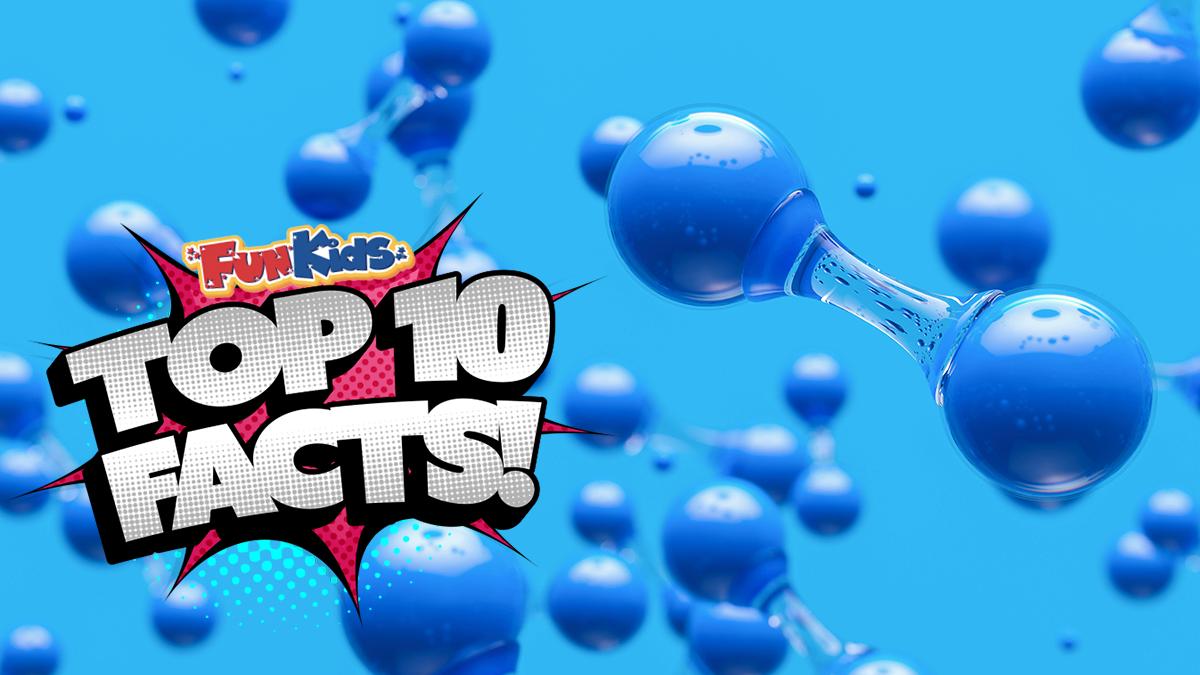We’re going on an exciting exploration of one of the most fascinating elements in the universe: hydrogen! Despite being the simplest and lightest element on the periodic table, hydrogen holds immense importance and potential across various fields, from powering futuristic vehicles to fuelling the fiery brilliance of fireworks. Let’s uncover ten captivating facts about hydrogen, from its cosmic abundance to its role in everyday life, prepare to be amazed by the wonders of this tiny but mighty element.
1. Hydrogen is the most abundant element in the universe.
Hydrogen is everywhere!
It can be found in stars, like our sun, and in vast clouds of gas floating in space.
It’s the simplest and lightest element, made up of just one proton and one electron.
Because it’s so light, hydrogen is often found at the very edges of galaxies and in interstellar space.
2. Hydrogen is a key ingredient in water.
You know that clear, refreshing liquid you drink every day? Well, it’s made of hydrogen!
Water is made up of two hydrogen atoms and one oxygen atom bonded together. That’s why scientists call water H2O.
Without hydrogen, we wouldn’t have water, and life as we know it wouldn’t exist.
Embed from Getty Images
3. Hydrogen can be used to power vehicles.
Hydrogen isn’t just for making water; it can also be used as fuel!
When hydrogen combines with oxygen in a special device called a fuel cell, it creates electricity, water, and heat. This process can power cars, buses, and even rockets.
Using hydrogen as fuel produces almost no pollution, which is great for the environment.
Embed from Getty Images
4. Hydrogen is the lightest element.
Imagine an element so light that it floats in the air! That’s hydrogen for you.
It’s the lightest element on the periodic table, which means it weighs less than any other element.
Because it’s so light, hydrogen gas can rise up into the sky and escape Earth’s gravity.
Embed from Getty Images5. Hydrogen is used to cool generators in power plants.
Power plants that generate electricity can get really hot, especially the big machines called generators.
To keep them from overheating, engineers use hydrogen gas as a coolant.
Hydrogen is great for this job because it’s very efficient at transferring heat away from the generators, keeping them running smoothly.
Embed from Getty Images6. Hydrogen is used in some fireworks.
Fireworks are dazzling displays of light and colour, and hydrogen plays a role in creating some of those brilliant effects.
Certain types of fireworks use hydrogen gas to produce colourful explosions.
When hydrogen combines with other chemicals inside the firework, it creates spectacular bursts of light in the sky.
Embed from Getty Images7. Hydrogen is used to make some delicious foods.
Hydrogen isn’t just for science experiments; it’s also used in the food industry!
It’s used to make fats and oils solidify, like in the process of making margarine.
Hydrogen is also used to make yummy snacks like crisps and crackers.
So, the next time you enjoy a crunchy snack, remember that hydrogen played a part in making it!
Embed from Getty Images8. Hydrogen has been used in balloons for a long time.
Before helium became popular for filling balloons, hydrogen was the gas of choice.
In fact, the very first manned flight in a balloon used hydrogen.
In 1783, two French brothers, Joseph-Michel and Jacques-Étienne Montgolfier, flew in a hot-air balloon filled with hydrogen.
Since then, hydrogen balloons have been used for all sorts of adventurous flights.
Embed from Getty Images
9. Hydrogen is the fuel of the stars.
Stars, like our sun, are gigantic balls of glowing gas, and hydrogen is their main fuel.
Deep inside a star’s core, hydrogen atoms smash together under immense pressure and heat, releasing energy in a process called nuclear fusion.
This energy keeps stars shining brightly for billions of years.
Embed from Getty Images10. Hydrogen has three isotopes.
There are different types of hydrogen! They’re called isotopes, and they’re kind of like versions of hydrogen with tiny differences.
The most common one is called protium, which is what we usually think of when we hear “hydrogen.”
Then there’s deuterium, which is used in special science experiments and some power plants.
The third type is called tritium, which is a bit special because it’s a bit unstable, meaning it changes over time. It’s used in some glow-in-the-dark stuff, like signs and watch hands that light up in the dark.
Embed from Getty Images Add a commentTop 10 Facts
From the Tudors to rocks to fish, we have all the best facts right here!
More From Top 10 Facts






